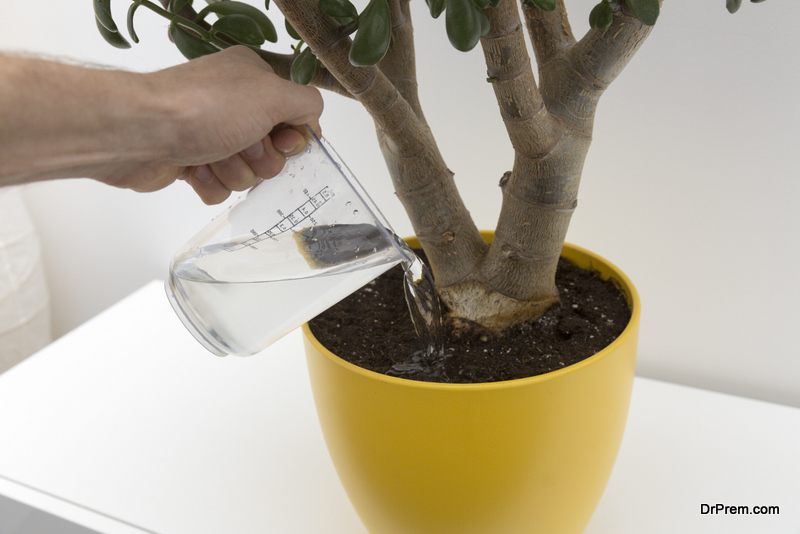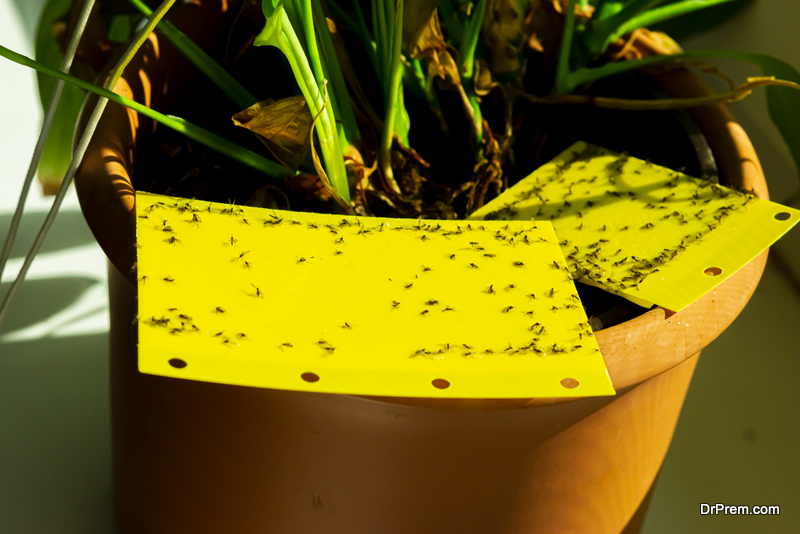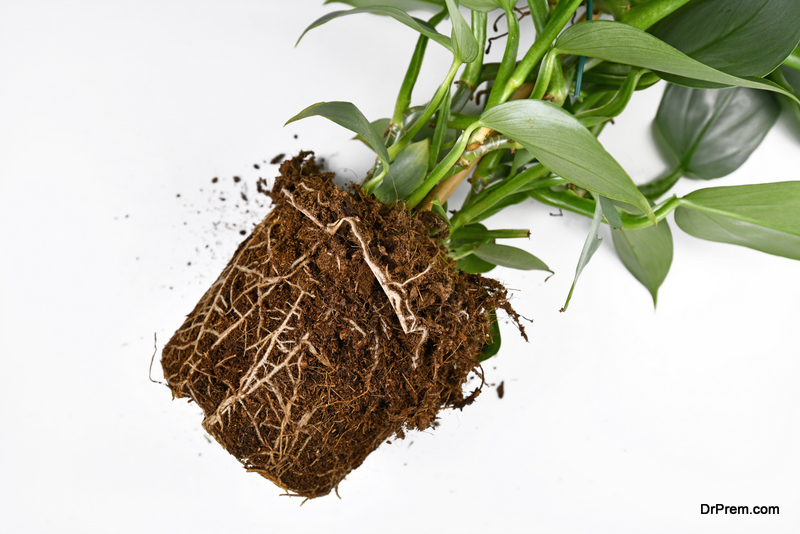Since it is what stays above the ground that we reap, most of the growers focus solely on that. However, we sometimes forget that roots are where everything starts. While nature can take care of it when the plants are in a natural environment, when it comes to indoor plants, we are supposed to take charge. In fact, in an indoor grow room we need to pay special attention to the roots as that is where the plants absorb water and nutrients through a process called osmosis.
Major Problems Affect Plant’s Roots and How to Solve Them
It goes without saying that to make your plants optimally, roots are what you focus on first. For that, first of all you need to identify and solve all of the so-called root-zone problems. Here are some of the major problems affecting the roots of the plants along with possible solutions.
1. Over/Under watering
 If you have been watering plants for a long time, you might know what an art watering the plants could be. Give the plant much water and it would drown the plant, resulting in drooping yellow leaves. This happens because plants then lack Oxygen, which is vital for their health.
If you have been watering plants for a long time, you might know what an art watering the plants could be. Give the plant much water and it would drown the plant, resulting in drooping yellow leaves. This happens because plants then lack Oxygen, which is vital for their health.
Overwatering is something that you don’t experience frequently if you practice Hydroponic farming. Nevertheless, in cases when you are introducing DWC, NFT, Autopot or dripper system, you need to be on the watch. First allow the small plant to grow and establish its roots, this would include gradually increasing the watering, and by opting for techniques like drippers that slowly emit nutrient solution on an hourly basis.
Just like overwatering, watering too little would also result in the drooping of the leaves and would ultimately affect the rest of the plant. Slowly, the leaves would begin shrivelling up and dying. This would continue till ultimately the roots die and the plant reaches a point where you can’t save it anymore. This is especially true for an Aeroponic system i.e. a system in which the plants need regular rhizosphere misting.
The Solution
In case of over watering, the solution is what you might think it is. Simply don’t water the plant until the excess water dries out. A great way of gauging this could be picking up the pot and judging by its weight whether there’s any water left in it or not. If, during subsequent days, you notice a great change in the weight of the plant, you can be assured that the water has dried out. However, if you have a Hydroponic system, the best way to tackle overwatering would be simply changing he frequency of watering.
On the other hand, when your plant is under water, you need to follow the opposite strategy, which is, watering the plant of course. Do it whenever you notice the symptoms of under watering. The only thing that you should be careful about is to not overwater the plant in the process. In addition, turning the lights away would always help plants save moisture as it would prevent excessive transpiration.
2. Imbalance in pH
The pH of the substrate has an immediate impact on the nutrients that the plant can absorb. Plants generally have a small range of pH scale for which they would optimally absorb all the elements needed for their growth without any imbalance. Depending upon your substrate, it could be anywhere between 5.5 and 6.5. It could go up to 7 in some organic substrates like coco. However, if the pH of the substrate would fall out of this range, you might encounter several problems. Both high and low pH would disrupt the optimum absorption of elements by the plants resulting in deficiencies over time.
Solution
First of all, make sure that you keep yourself updated about the pH of the nutrient solution on a regular basis. If you can afford to do that, you should also test the ‘run-off’, as it could tell you a lot about what the plant is experiencing at the root zone. For this, it’d be better if you invest in any of the pH test kits that you might find on websites like that of Progrow Hydroponics. Even a pH meter could be of great help if it is calibrated on a regular basis using Buffers.
3. Root-bound
 If your plants don’t have enough space to spread their roots into or when tap roots seek nutrients that aren’t present at moment, the plants are quite likely to become root bound.
If your plants don’t have enough space to spread their roots into or when tap roots seek nutrients that aren’t present at moment, the plants are quite likely to become root bound.
Solution
When you are growing plants in conventional pots, make sure that the plants have enough space to spread their roots into the growing substrate. In addition, ensure that the pot that you are buying is roomy enough to accommodate the plant’s roots once it is mature. Also, keep in mind to provide the plant with the required nutrients so that the roots don’t look out for the nutrients and strangulate in the process. Buying something like Air-pots could help negating this problem completely.
4. Pythium/Root-rot
When it comes to hydroponic farming, this is one of the common causes that result in the death of the plant. It’s mostly because the growers don’t identify it till it is too late. The usual cause behind is roots lying in stagnant water that has temperature higher than 20 degrees Celsiusand has less than optimum oxygen content. Compared to others, it is more common in hydroponic systems such as NFT and DFC, and is more likely to happened during summers, especially when you don’t have a water chiller to keep the water temperature within the safe range.
Pythium is basically a water mould. So, in order to prevent it, it is important that you keep the hydroponic system clean and sterile at all times. Pythium could also hide in the plastic of the hydroponic system having microscopic scratches in it. Moreover, root rot could also happen in the substrates, particularly when the drainage media is poor and frequent temperature fluctuations happen. One of the primary indicators of the root rot is generally the smell. Slimy, brown and stinky roots would confirm it.
Solution
First and foremost, you should sterilize the plastics with Hydrogen Peroxide, no matter whether it is the syringes or the EC and pH meters. You should ideally this this once after each crop.
Furthermore, you should remember that water temperature could play a key role in the oxygen saturation. It decreases with the increase in water temperature with the ideal being 16 to 18 degrees Celsius. Above 20 degrees Celsius, the water starts losing its ability to contain oxygen. To solve this problem, you can opt to have chillers that maintain a stable water temperature.
Apart from the temperature, the movement of the water is also necessary when it comes to maintaining the optimum oxygen levels in the nutrient solution. Bubblegen and Air-stones are two popular techniques that assure that the moving water doesn’t simply stagnate. You could also use air pumps, but they create a lot of buzzing sound. So, it’s always better to use Bubblegen which runs quietly, and also connects with the water pump pretty easily.
5. Fungus gnats
 These are basically larvae of tiny black flies that are known to cause quite a problem. Once adult, the fungus gnats lay their eggs into the topmost soil. The resulting larvae end up stomaching the roots of your plants. The first indication of these is small black insects flying around your plants, (especially when watering them). You need to deal with them ASAP.
These are basically larvae of tiny black flies that are known to cause quite a problem. Once adult, the fungus gnats lay their eggs into the topmost soil. The resulting larvae end up stomaching the roots of your plants. The first indication of these is small black insects flying around your plants, (especially when watering them). You need to deal with them ASAP.
Solution
Using sticky traps around the pots could help in dealing with the adult flies, whereas in order to exterminate the larvae you could use root drench like Tanlin.
Final Words
These were some of the most important problems that you need to keep in mind to ensure the health of the root-zone of your plant. In short, keep the room clean, be aware about the watering cycle and EC and pH levels, and keep the pests and diseases in check. That’d go a long way in ensuring the root health of your plant.
Article Submitted By Community Writer




